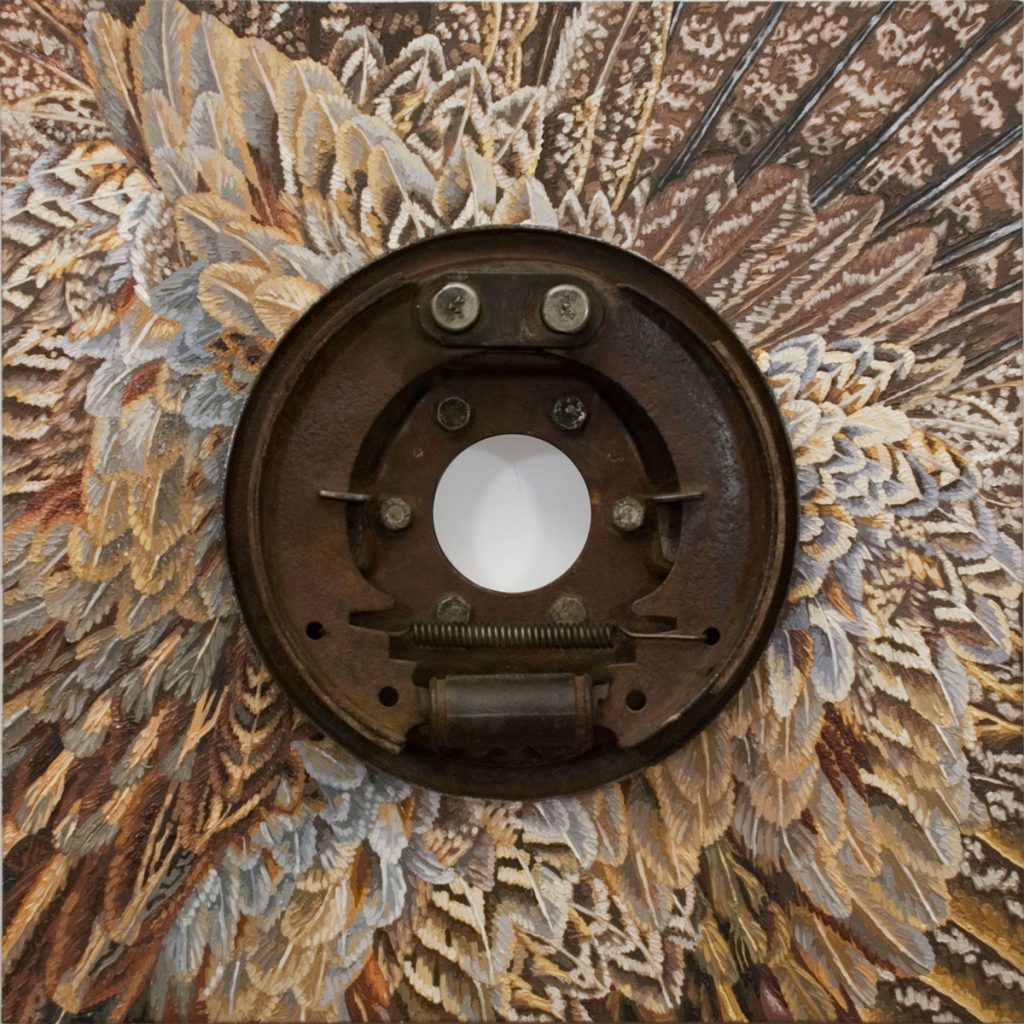Not This, Not That
By Betty Ann Brown

Everything tends to make us believe that there exists a certain point of the mind at which life and death, the real and the imagined, past and future, the communicable and the incommunicable, high and low, cease to be perceived as contradictions. — Andre Breton
Alyson Souza’s art is Surrealist in the very best sense of the word. Which is to say she creates work that conflates the two sides of binary oppositions–binaries like light-dark, culture-nature, within-without–to create images that transcend common perceptions. Her recent body of work, currently exhibited at Coagula Curatorial, is titled “The Speed of Dark”: a smart play on the familiar phrase, “the speed of light.” (Does darkness speed? Or merely hover, eternally, just outside our field of vision?) The light referred to is natural light–the sun, the plants grown in its warm rays, and our earthly elegance reflecting its glow–as well as man’s manipulation of light through electricity. What we see are plant forms juxtaposed with old machine parts, bleached human bones laid alongside vintage insulation components, terrain patterns contrasted with mapping contours. Thickly impastoed leaves spin around a rusted wheel. Feathers wreath an old sprocket. Fern fronds ruffle behind a numbered dial. And a miniature cityscape–seen as if through the wrong end of a magnifying glass–floats like a circular jewel at the back of a human skull.
In the center of the gallery is a sculptural structure that oscillates between a log cabin and a skeletal torso. Ribbed doors open to layers of forest, as if the chest cavity were invaded by nature. (Well, isn’t it?) On one steeply pitched pediment is a densely packed circle of twine. On the other, the same twine opens out as if exploded. Or like the desperate reach of stunted roots. Or perhaps the errant tresses of a frizzy pony tail.
Think of the way Salvador Dali and Louis Bunuel worked on Un Chien Andalou: They replaced the arms of a cross with a wooden tennis racket on an apartment wall, the seeping blood of a stigmata with a spill of ants on an open palm. As Freud noted, visually similar images can symbolically represent each other. A man’s tie can refer to the phallus, a box to female genitalia. (Indeed, Dali and Bunuel ritualized sexual intercourse as the repeated folding of a striped tie into a hinged box.)
Souza mines this interpretation, allowing shapes to assume multiple allusions, sliding from body parts to mechanical devices, metacarpals to insulators, braided hair to rope to insulated wire. And in this sliding–this graceful sliding–the old separation of God-made and man-made seems not just artificial but meaningless.
We can trace back to the Greeks the idea that human culture is separate from and in fact opposed to nature. (Whereas the ancient cultures of Egypt and Mesopotamia combined human and animal in their depictions of the divine, the Greeks considered human-animal fusions like the Minotaur and Centaur to be monstrous and evil.) So we consider a human-designed building culture, while a bird nest is nature. This separation is so deeply ingrained that it’s a bit shocking to hear that when asked how his art related to nature, Jackson Pollock responded with “I am nature.” (This was reported by Lee Krasner, in discussing Polllock’s first conversation with Hans Hofmann.)
Alyson Souza is nature, too. Or rather, her work is nature. Nature shot through with culture. Or is it culture interwoven with nature? Thickly encrusted paint, roughly grained wood, rusted metal, wire, leaves, bones. All of it marvelously beautiful.
You know: art.